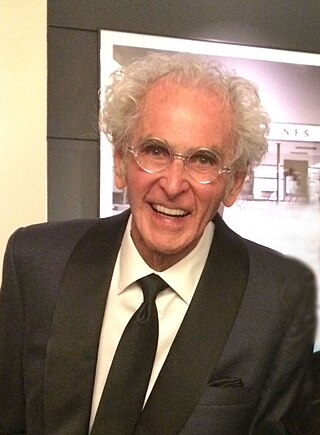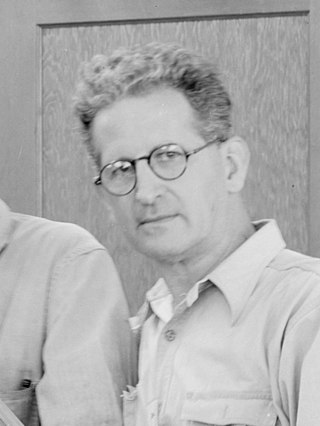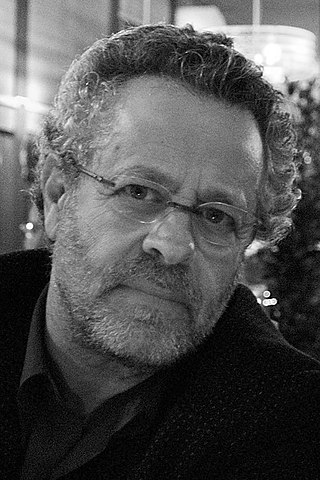Related Research Articles

Ansel Easton Adams was an American landscape photographer and environmentalist known for his black-and-white images of the American West. He helped found Group f/64, an association of photographers advocating "pure" photography which favored sharp focus and the use of the full tonal range of a photograph. He and Fred Archer developed a system of image-making called the Zone System, a method of achieving a desired final print through a technical understanding of how the tonal range of an image is the result of choices made in exposure, negative development, and printing.

Group f/64 or f.64 was a group founded by seven American 20th-century San Francisco Bay Area photographers who shared a common photographic style characterized by sharply focused and carefully framed images seen through a particularly Western (U.S.) viewpoint. In part, they formed in opposition to the pictorialist photographic style that had dominated much of the early 20th century, but moreover, they wanted to promote a new modernist aesthetic that was based on precisely exposed images of natural forms and found objects.

Edward Henry Weston was an American photographer. He has been called "one of the most innovative and influential American photographers" and "one of the masters of 20th century photography." Over the course of his 40-year career Weston photographed an increasingly expansive set of subjects, including landscapes, still lifes, nudes, portraits, genre scenes, and even whimsical parodies. It is said that he developed a "quintessentially American, and especially Californian, approach to modern photography" because of his focus on the people and places of the American West. In 1937 Weston was the first photographer to receive a Guggenheim Fellowship, and over the next two years he produced nearly 1,400 negatives using his 8 × 10 view camera. Some of his most famous photographs were taken of the trees and rocks at Point Lobos, California, near where he lived for many years.
Pure photography or straight photography refers to photography that attempts to depict a scene or subject in sharp focus and detail, in accordance with the qualities that distinguish photography from other visual media, particularly painting. Originating as early as 1904, the term was used by critic Sadakichi Hartmann in the magazine Camera Work, and later promoted by its editor, Alfred Stieglitz, as a more pure form of photography than Pictorialism. Once popularized by Stieglitz and other notable photographers, such as Paul Strand, it later became a hallmark of Western photographers, such as Edward Weston, Ansel Adams and others.

Jerry Norman Uelsmann was an American photographer.

Ruth Bernhard was a German-born American photographer.

Nancy Wynne Newhall was an American photography critic. She is best known for writing the text to accompany photographs by Ansel Adams and Edward Weston, but was also a widely published writer on photography, conservation, and American culture.
Kiyoshi Koishi was one of the most prominent Japanese photographers in the first half of the 20th century.
John Sexton is an American fine art photographer who specializes in black and white traditional analog photography.
Don Worth was an American photographer. His childhood on an Iowa farm inspired an abiding love of exotic horticulture, which later became the primary focus of his photography. He attended Juilliard as well as the Manhattan School of Music, receiving a graduate degree in piano and composition in 1951. During college, he began photographing and eventually became Ansel Adams' first full-time assistant in 1956. He taught photography at San Francisco State University for thirty years becoming a Professor Emeritus of Art.

George Cedric Wright was an American violinist and a wilderness photographer of the High Sierra. He was Ansel Adams's mentor and best friend for decades, and accompanied Adams when three of his most famous photographs were taken. He was a longtime participant in the annual wilderness High Trips sponsored by the Sierra Club.

Morley Baer, an American photographer and teacher, was born in Toledo, Ohio. Baer was head of the photography department at the San Francisco Art Institute, and known for his photographs of San Francisco's "Painted Ladies" Victorian houses, California buildings, landscape and seascapes.
Willard "Herc" Detering Morgan was a photographer, writer, editor, and educator and the husband of photographer Barbara Morgan, known for her documentation of Martha Graham's dances.

Moonrise, Hernandez, New Mexico is a black-and-white photograph taken by Ansel Adams, late in the afternoon on November 1, 1941, from a shoulder of highway US 84 / US 285 in the unincorporated community of Hernandez, New Mexico. The photograph shows the Moon rising in a dominating black sky above a collection of modest dwellings, a church and a cross-filled graveyard, with snow-covered mountains in the background. Adams captured a single image, with the sunset lighting the white crosses and buildings. Because Adams did not date the image, attempts have been made to determine a date from astronomical information in the photograph. It is one of Adams' most popular works.
Robert Heinecken was an American artist who referred to himself as a "paraphotographer" because he so often made photographic images without a camera.

Dody Weston Thompson was a 20th-century American photographer and chronicler of the history and craft of photography. She learned the art in 1947 and developed her own expression of “straight” or realistic photography, the style that emerged in Northern California in the 1930s. Dody worked closely with contemporary icons Edward Weston, Brett Weston and Ansel Adams during the late 1940s and through the 1950s, with additional collaboration with Brett Weston in the 1980s.
Untitled was a serial publication published by the Friends of Photography from 1972 to 1994. A total of 58 numbered publications were issued, first as a small magazine format and later as a series of booklets and full-size books. Numbers 1-10 displayed the series name and issue number on the cover, but as the publications became more specialized each number was titled independently in addition to the series name. The smallest publication in the series was Number 1, with 10 pages, and the largest was Number 43, with 156 pages.

Liliane de Cock Morgan was a Belgian-born American photographer who won a Guggenheim Fellowship in 1972, and was assistant to Ansel Adams.
Marsha Lynn Burns is an American photographer.

Arthur Ollman is an American photographer, author, curator, professor emeritus (San Diego State University, and founding director of The Museum of Photographic Arts, San Diego. He served as MoPA director from 1983 to 2006, and as director of the School of Art, Design and Art History, SDSU, from 2006 to 2011. He was president of the board of directors for the Foundation for the Exhibition of Photography and has authored and contributed to more than twenty-five books and catalogs.
References
- ↑ Alinder, James G. (1987). Light Years: The Friends of Photography 1967–1987 . Carmel, CA: Friends of Photography. ISBN 0-933286-48-1.
- ↑ Alinder 1987, p. 8.
- ↑ Alinder 1987, pp. 33–34.
- ↑ Alinder 1987, p. 75.
- ↑ Suzanne Muchnic (September 19, 1989). "Friends of Photography Moves Into San Francisco". Los Angeles Times. Retrieved 2016-04-24.
- ↑ Julie Lew (October 8, 1989). "Museum Is Named for Ansel Adams". New York Times. Retrieved 2016-04-24.
- ↑ Read, Michael (1993). Ansel Adams: New Light, Essays on His Legacy and Legend . Carmel, CA: Friends of Photography. ISBN 0-933286-61-9.
- 1 2 3 David Bonetti (October 18, 2001). "Ansel Adams Center to shut its doors, Nonprofit will sell 140 of his prints". SFGate. Retrieved 2016-04-24.
- ↑ Rowlands, Penelope (March 1998). "Friends of Photography at the Ansel Adams Center". Art News. 97: 66.
- ↑ Barry Pineo (November 4, 2005). "Ansel Adams: Revelations". The Austin Chronicle. Retrieved 2016-04-28.
- ↑ Alinder 1987, pp. 76–81.
- ↑ Alinder 1987, p. 89.
- ↑ Friends of Photography (1979). Carlton E. Watkins : photographs of the Columbia River and Oregon. Friends of Photography. ISBN 9780933286139.
- ↑ James Enyeart (1980). Robert Heinecken. Friends of Photography. ISBN 9780933286191.
- ↑ Susan Shaw (1983). Overexposure: Health Hazards in Photography. Friends of Photography. ISBN 9780933286375.
- ↑ Alinder 1987, p. 95.